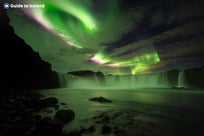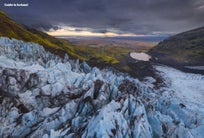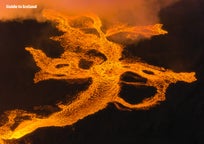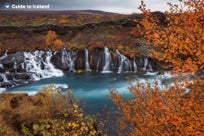
Traveling to Iceland by Cruise Ship

- What to Know About Cruise Liners Visiting Iceland
- Reykjavik Harbors
- Things To Do From Reykjavik Harbor
- Akureyri Harbor
- Things To Do From Akureyri Harbor
- Isafjordur Harbor
- Things To Do From Isafjordur Harbor
- Other Ports and Harbours Around Iceland
- Seydisfjordur Harbor
- Djupavogur Harbor
- Husavik Harbor
- Hofn Harbor
- Eskifjordur Harbor
- Akranes Harbor
- Hafnarfjordur Harbor
- Grundarfjordur Harbor
- Siglufjordur Harbor
- Saudarkrokur Harbor
- Stykkisholmur Harbor
- Westman Islands Harbor
- Patreksfjordur Harbor
- Thorlakshofn Harbor
- FAQs About Cruise Ship Travel in Iceland
- How long do cruise ships usually stay in Iceland’s ports?
- How much time should I budget for shore excursions in Iceland?
- Do I need to book shore excursions in advance?
- Are tours available directly from cruise ship ports in Iceland?
- What happens if my cruise ship is delayed and I miss a booked tour?
- Is Iceland suitable for families traveling on cruise ships?
- How do cruise ships affect Iceland's environment?
- Can cruise ships dock in Iceland without harming the local environment?
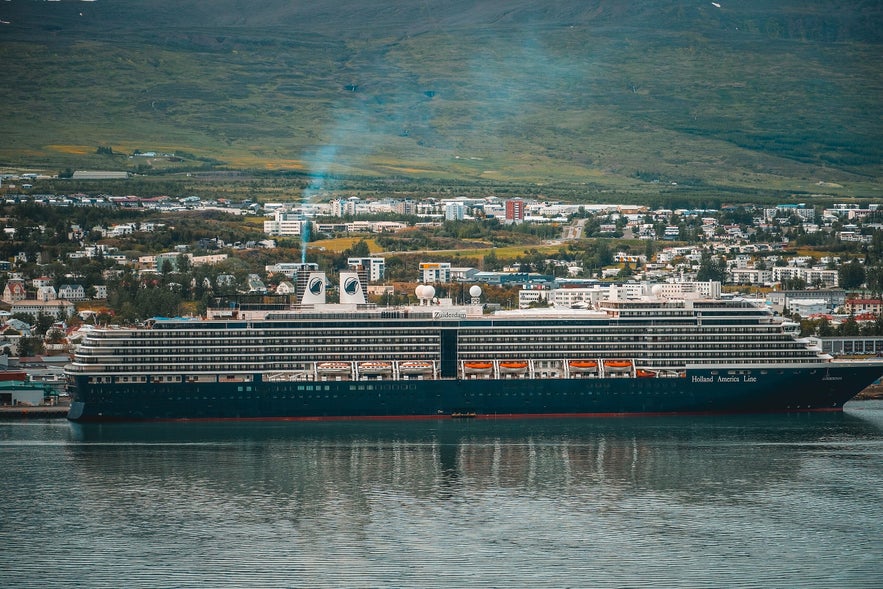
Iceland has become a popular destination for cruise ship travelers thanks to its stunning natural landscapes and cultural experiences. With many ports of call around the country, it's easy for cruise passengers to explore Iceland’s highlights with exciting shore excursions. It's a hassle-free way of experiencing nature, finding fun activities, and getting to know the local culture!
Explore some of Iceland's most famous locations with the best-rated Golden Circle tour from Reykjavik, or head out for a North Iceland adventure with this small group tour from Akureyri Harbor, bringing you to the incredible Lake Myvatn area with ease.
You'll find exciting activities all around Iceland, perfect for both shorter and longer stops. This makes it easy to plan a fantastic journey and make the most of your time in every port. Read on for all you need to know about visiting Iceland on a cruise ship!
Photo above from Wikimedia, Creative Commons, by Cosmic6811
What to Know About Cruise Liners Visiting Iceland
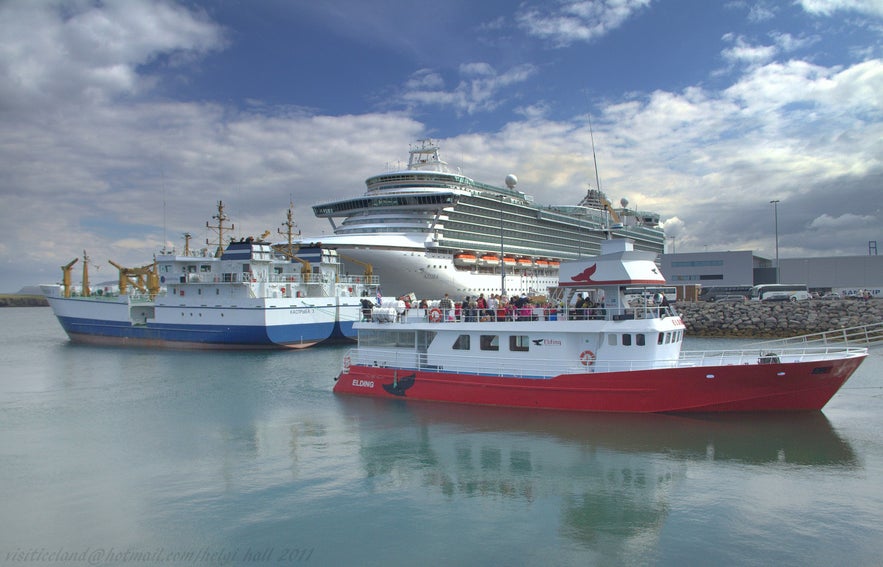
Photo from Wikimedia, Creative Commons, Helgi Halldórsson. No edit made.
One of the key benefits of arriving by cruise ship is the opportunity to see multiple destinations without booking separate transports or accommodations for your time in Iceland. The ship serves as a convenient base, allowing travelers to explore a variety of towns and landscapes while returning to a familiar setting each evening. At the same time, you'll be able to enjoy the many luxuries of your cruise ship of choice!
Cruise liners traveling to Iceland stop at several key ports, most commonly Reykjavik, Akureyri, and Isafjordur. You may also arrive in charming small towns like Seydisfjordur and Djupivogur.
 When your ship docks, you’ll usually disembark directly into the town or port area, making it easy to start exploring. Each harbor has basic facilities, such as tourist information centers, restrooms, and sometimes small shops or cafes.
When your ship docks, you’ll usually disembark directly into the town or port area, making it easy to start exploring. Each harbor has basic facilities, such as tourist information centers, restrooms, and sometimes small shops or cafes.
Transportation options vary depending on the port. Larger towns like Reykjavik and Akureyri offer public transport, while smaller harbors often require advance planning for rental cars. If you plan on doing some sightseeing, then we recommend booking all tours in advance, as availability can be limited during peak seasons.
- Learn about the Weather & Temperature in Iceland
- See also: What To Pack for Iceland for All Seasons
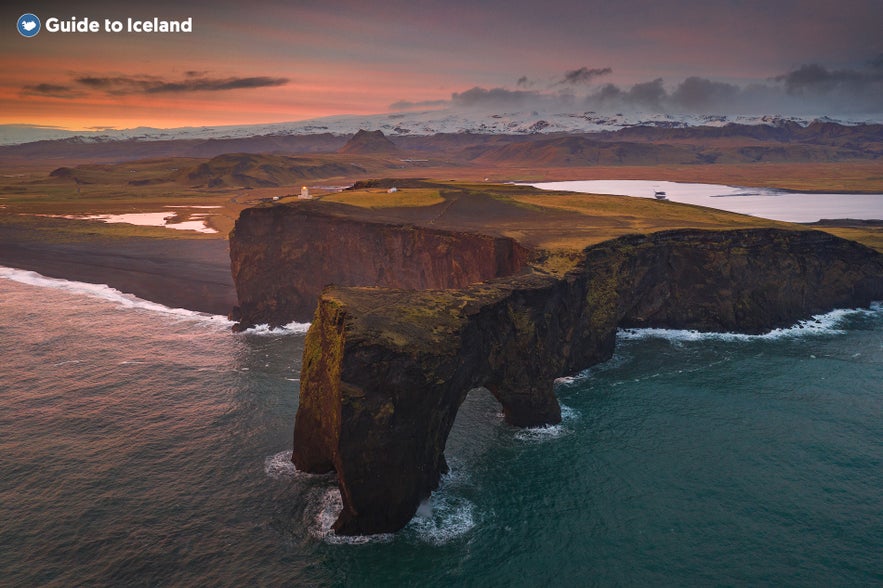
The Dyrholaey rock arch in South Iceland.
What makes traveling to Iceland with a cruise ship incredible is the chance to see the diversity of the landscapes from the sea. Sailing along the South Coast brings views of volcanic black sand beaches set against massive glaciers like Myrdalsjokull and Vatnajokull, the largest in Europe.
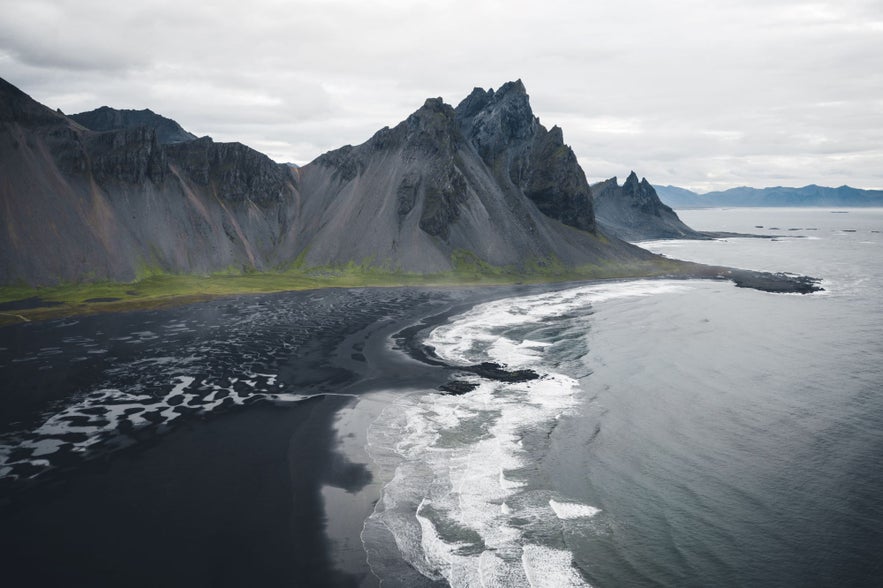
Vestrahorn mountain in Southeast Iceland is incredible.
Navigating through East Iceland brings views of deep fjords cradling small and charming towns. The mountains tower over the coastline and are draped in countless waterfalls.
If your cruise ship docs in Akureyri, you'll see the rich marine and bird life of North Iceland. There are excellent opportunities for spotting puffins and seals, and as it's one of the best places in the world for whale-watching tours. You may be lucky enough to spot many different whale species!
- Check out the Best Guide to Whale Watching in Iceland

The remote Westfjords provide some of the most untouched landscapes in Iceland, with rugged coastlines, incredible ocean cliffs, and pristine waters teeming with wildlife. It's truly a region filled with natural wonders.
Each region of Iceland allows travelers to witness these dramatic changes in scenery. Even around Reykjavik, you’ll be exposed to magnificent landscapes, such as the volcanic Reykjanes peninsula and the dramatic Snaefellsnes peninsula.
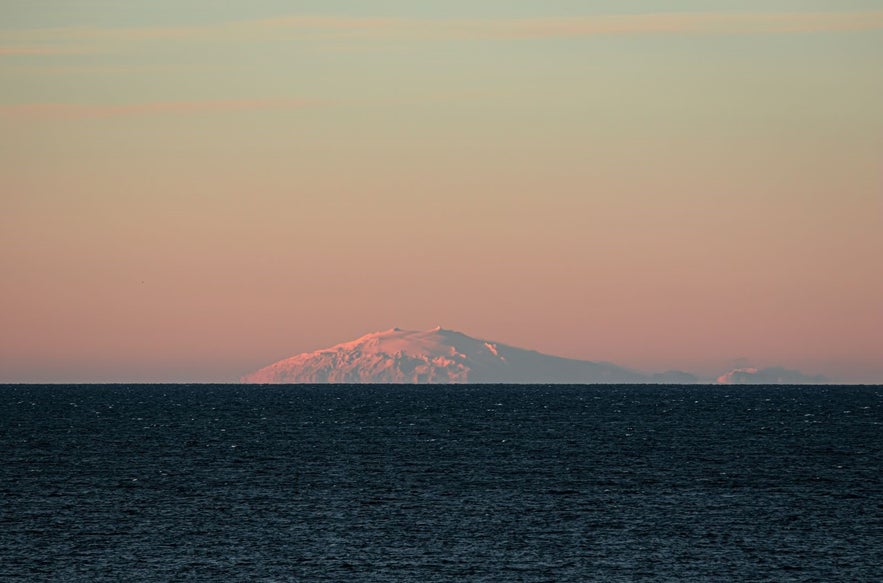
The majestic Snaefellsjokull glacier can be seen from Reykjavik on clear days.
Iceland is a spectacularly beautiful country, no matter how you witness it. The chance to enjoy it from the ocean, however, is particularly unique and rewarding. Of course, as cruise ships mostly travel throughout summer, all of these scenes can be marveled over throughout the night, beneath the midnight sun!
- Discover the Complete Guide to the Midnight Sun in Iceland
- Also, check out the Best Attractions by the Ring Road of Iceland
Reykjavik Harbors

Reykjavik is the main destination for most visitors to Iceland, including those traveling by cruise ship. As Iceland's capital, it's central to the tour industry and a cultural hub with plenty of great activities, restaurants, and shops.
Reykjavik has two main harbors, the Old Harbour, or "Miðbakki," and the New Harbour, or "Sundahöfn," where most ships will dock on the "Skarfabakki" terminal.
Most cruise ship passengers arrive at Skarfabakki due to its much greater size, which allows it to accommodate enormous vessels. The harbor is a 10-minute drive from the main downtown area, which can also be reached by public Reykjavik bus or an hour's walk along the shoreline.
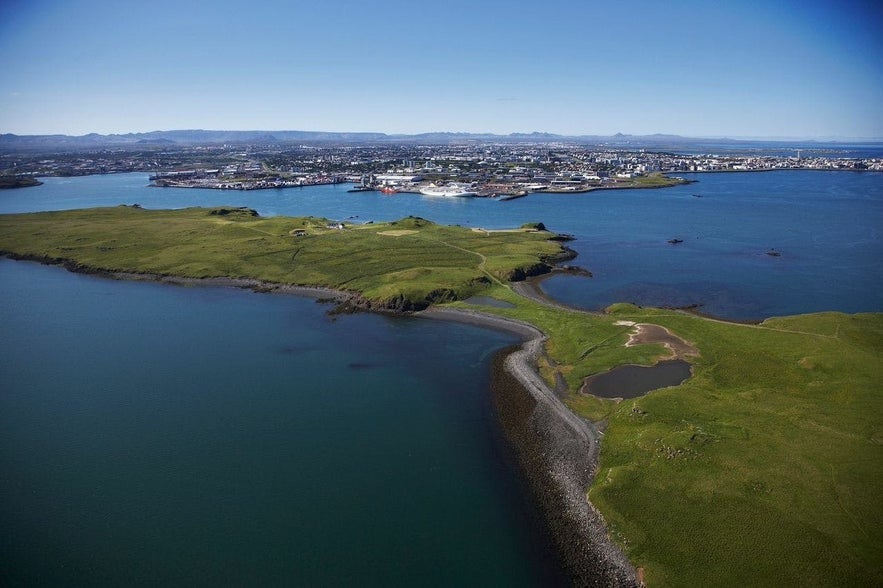
Photo from Ferry to Videy Island with Transfer from Skarfabakki Pier.
Some cruise ships to Iceland will dock in the Old Harbor right in the city center, but these are less common. This location makes it easy to explore the main sights of Reykjavik on foot or catch guided tours departing from the downtown area.
No matter which harbor you arrive at, there are plenty of excellent shore excursions in Reykjavik, which will pick you up and drop you off right by your ship. This makes it easy to try some of the unique experiences Iceland has to offer.
- Learn about the Top 14 Things to Do in Reykjavik
Things To Do From Reykjavik Harbor

Photo from Excellent 2.5-Hour Horse Riding Tour in Raudholar Volcanic Countryside with Transfer from Reykjavik
Depending on how long your cruise ship is staying in Reykjavik, you have some great activity options to choose from. We highly recommend the unique experience of horse riding through Iceland's volcanic landscapes on this 2.5-hour horse-riding tour.
It brings you through the volcanic Raudholar red hills on the edge of Reykjavik, and going on horse riding tours is an excellent way to see Icelandic nature. You'll also get to know the completely adorable Icelandic horse!
- See more: Top 14 Things to Do in Reykjavik
- Also, check out The Icelandic Horse: A Comprehensive Guide
 If you have more than an afternoon, do a tour of the Golden Circle route. This Golden Circle bus tour takes around 7 hours and brings you to all the major sights, like the incredible Thingvellir National Park, Gullfoss waterfall, and the Geysir geyser.
If you have more than an afternoon, do a tour of the Golden Circle route. This Golden Circle bus tour takes around 7 hours and brings you to all the major sights, like the incredible Thingvellir National Park, Gullfoss waterfall, and the Geysir geyser.
If you have a whole day or more to explore, then the beautiful South Coast is a great option. Most South Coast tours will bring you all the way to the Reynisfjara black sand beach, with stops by beautiful mountains and waterfalls on the way.
- Plan your visit with the Ultimate Guide to Iceland's Golden Circle
 You can take this 10-hour small-group tour to see all the South Coast sights, such as the Seljalandsfoss and Skogafoss waterfalls. If you want to include additional activities in your tour, such as glacier hiking on one of the region's majestic glaciers, then this popular 12-hour South Coast minibus tour is a fantastic option.
You can take this 10-hour small-group tour to see all the South Coast sights, such as the Seljalandsfoss and Skogafoss waterfalls. If you want to include additional activities in your tour, such as glacier hiking on one of the region's majestic glaciers, then this popular 12-hour South Coast minibus tour is a fantastic option.
- Learn more with the Ultimate Guide to Iceland's South Coast
- See also: The Ultimate Guide To Glacier Tours in Iceland
 For a different kind of adventure, choose tours of the Snaefellsnes peninsula. Often called "Iceland in Miniature," this region offers a mix of dramatic cliffs, volcanic peaks, charming fishing villages, and black sand beaches, making it an amazing location for day trips from Reykjavik.
For a different kind of adventure, choose tours of the Snaefellsnes peninsula. Often called "Iceland in Miniature," this region offers a mix of dramatic cliffs, volcanic peaks, charming fishing villages, and black sand beaches, making it an amazing location for day trips from Reykjavik.
You can join this 12-hour small group tour of the peninsula, which takes you to highlights like the iconic Kirkjufell mountain, the rugged coastline of Arnarstapi, and the breathtaking Snaefellsjokull glacier. It's a perfect way to get a glimpse at the diversity of Iceland's landscapes all in one day.
- Discover the Top 16 Things to Do on the Snaefellsnes Peninsula
 No matter how long your cruise ship is docked in Reykjavik, there’s an adventure waiting for you. From exploring the capital's highlights to venturing out into Iceland’s stunning natural landscapes, there’s something for every schedule and interest.
No matter how long your cruise ship is docked in Reykjavik, there’s an adventure waiting for you. From exploring the capital's highlights to venturing out into Iceland’s stunning natural landscapes, there’s something for every schedule and interest.
Make the most of your stop by planning ahead and choosing the activities that best match your available time. Just be mindful to leave some flexibility for unexcepted delays, as your cruise ship will not wait for you if you arrive late!
Akureyri Harbor
 Akureyri is one of Iceland's most popular destinations for cruise ship visitors, offering a gateway to the breathtaking landscapes of North Iceland. Known as the "Capital of the North," Akureyri is a charming town with a lively cultural scene, beautiful scenery, and easy access to some of the country’s most iconic attractions.
Akureyri is one of Iceland's most popular destinations for cruise ship visitors, offering a gateway to the breathtaking landscapes of North Iceland. Known as the "Capital of the North," Akureyri is a charming town with a lively cultural scene, beautiful scenery, and easy access to some of the country’s most iconic attractions.
Cruise ships visiting Akureyri dock at the town’s main harbor, which is conveniently located just a short walk from the town center. This proximity makes it easy for passengers to explore Akureyri’s highlights on foot.
- Check out the Best Restaurants in Akureyri
- See also: 13 Best Things to Do in Akureyri (and Nearby)

For those looking to venture further, North Iceland is home to some really beautiful nature that's well worth taking time to explore. This can be done with Akureyri tours, but if you're stopping for more than a day, it can be worth it to pick up a rental car in Akureyri.
If you don't want to bother with renting a car and driving yourself, there are also many shore excursions in Akureyri that will pick you up right by the main cruise ship harbor. This will make it easy to make the most of your time in town!
- Prepare for a day trip with Driving in Iceland: The Ultimate Guide to Road Trips
- Discover the 11 Must-See Destinations in North Iceland
Things To Do From Akureyri Harbor
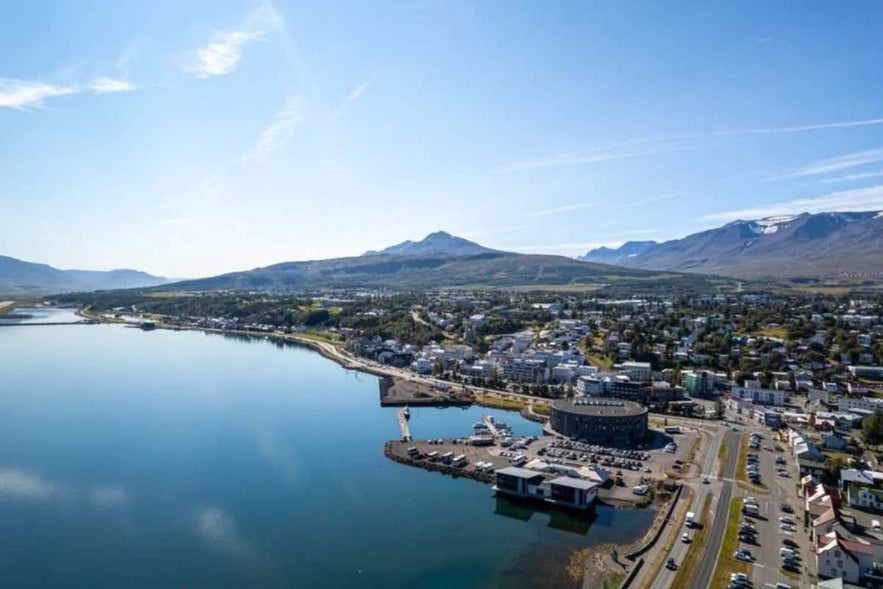
Photo from Exciting 2-Hour Akureyri City Walk with Food Tasting
Depending on how long your cruise ship is staying in Akureyri, you’ll find plenty of incredible experiences to enjoy in North Iceland. If you only have a few hours, you won't regret spending some time exploring Akureyri itself.
It's one of the most charming towns in Iceland, and you'll find plenty of things to do. You can join this exciting 2-hour Akureyri city walk to learn about this lovely town, which also includes a food tasting!
Wander through the incredible Akureyri Botanical Gardens and stop for a coffee at LYST, see the Akureyrarkirkja church, and explore the lively downtown area filled with shops, restaurants, and museums. Don't miss out on a visit to the Forest Lagoon geothermal spa, which offers beautiful views over the majestic Eyjafjordur fjord.
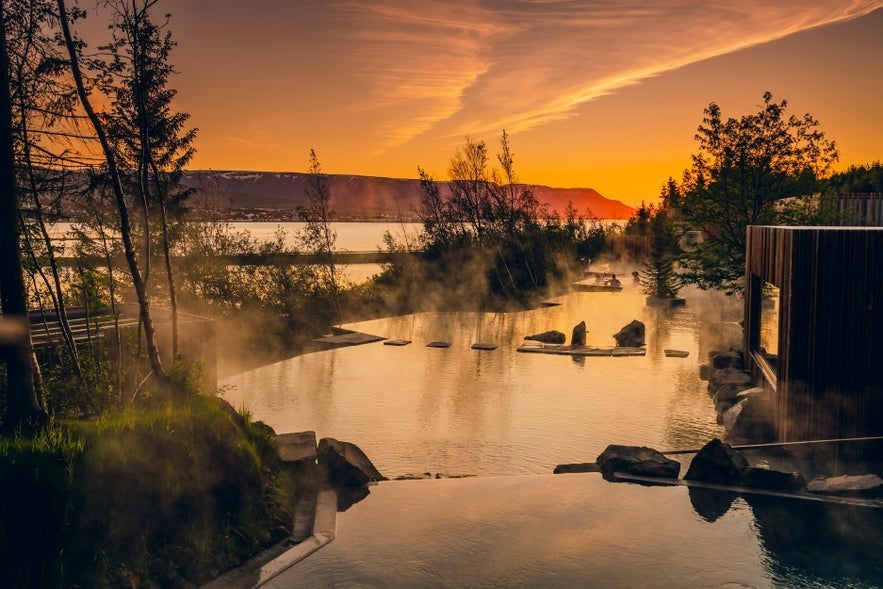 If you have a whole day, we recommend heading out to see some of the nature of North Iceland. The Lake Myvatn area is known for its diverse volcanic landscapes, with locations like the Dimmuborgir rock formations, the Namaskard geothermal area, and the Skutustadagigar pseudocraters.
If you have a whole day, we recommend heading out to see some of the nature of North Iceland. The Lake Myvatn area is known for its diverse volcanic landscapes, with locations like the Dimmuborgir rock formations, the Namaskard geothermal area, and the Skutustadagigar pseudocraters.
You can explore with this 6-hour Lake Myvatn minibus tour. It offers easy pick-up by the Akureyri cruise harbor and brings you to all the main sights of the area. If you want to include a relaxing soak at the Myvatn Nature Baths, then this 8-hour Myvant tour includes a soak at this geothermal spa.
- Learn more with the Ultimate Guide to Lake Myvatn
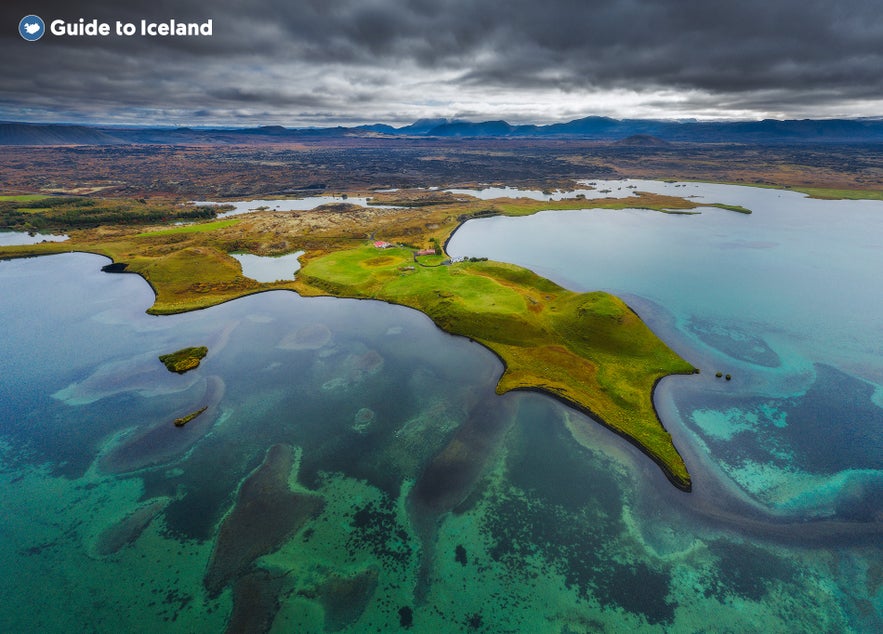 If you have more time, then Diamond Circle tours are an incredible option. This route includes stops at Godafoss waterfall, the powerful Dettifoss waterfall, Asbyrgi canyon, and the Lake Myvatn area. Each location offers unique geological and natural features that highlight the region’s volcanic and glacial history.
If you have more time, then Diamond Circle tours are an incredible option. This route includes stops at Godafoss waterfall, the powerful Dettifoss waterfall, Asbyrgi canyon, and the Lake Myvatn area. Each location offers unique geological and natural features that highlight the region’s volcanic and glacial history.
You can join this guided tour of the Diamond Circle from Akureyri, which takes eight hours and includes pick-up and drop-off by the harbor. If you only have a limited amount of time, you can at least see the first stop on the route with this two-and-a-half-hour Godafoss waterfall tour from Akureyri harbor. These tours are a convenient way to see the highlights of the area.
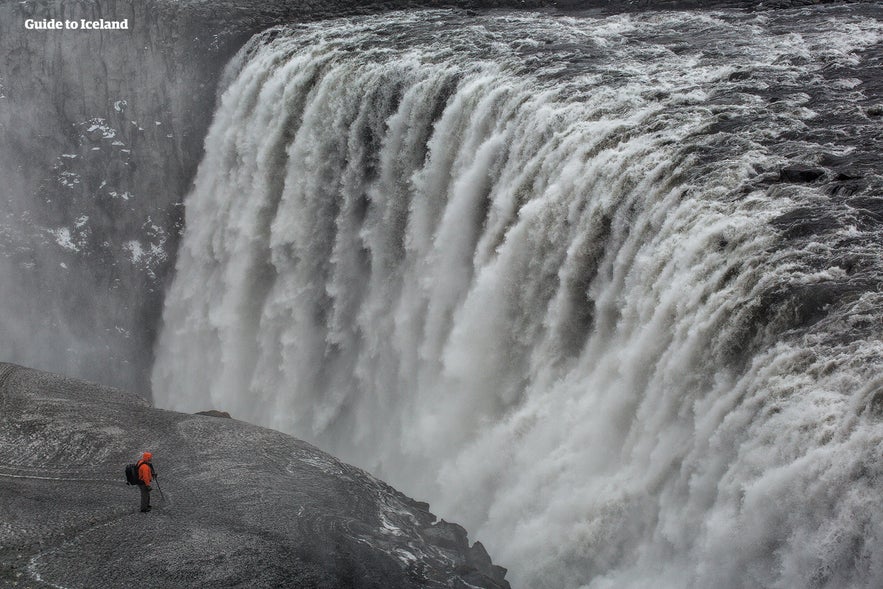
No matter how much time you have in Akureyri, there are plenty of ways to make the most of your visit. Whether you choose to explore the town's cultural and historical sights, unwind in a geothermal spa, or venture into the stunning landscapes of North Iceland, you’re sure to have an unforgettable experience.
With convenient tour options and activities for all schedules, Akureyri is a perfect stop for cruise ship travelers looking to discover the beauty and charm of Iceland’s north.
Isafjordur Harbor
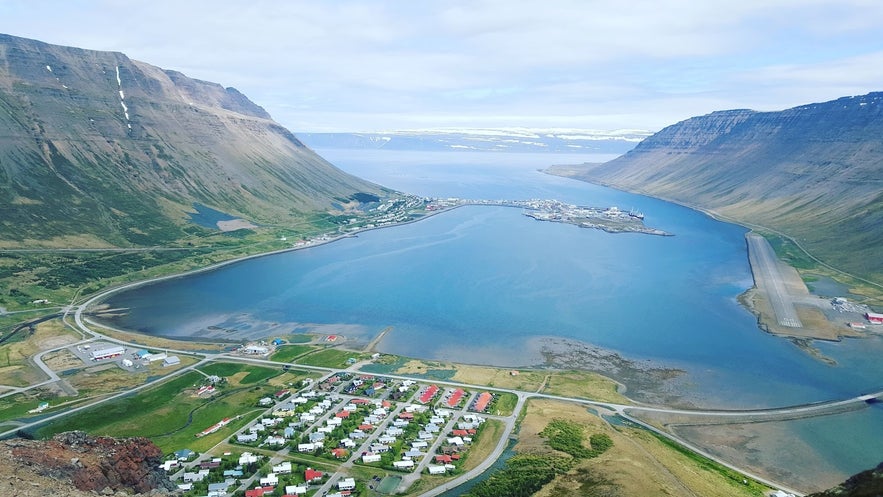
Photo from Wikimedia, Creative Commons, by Sturlast~iswiki. No edits made.
Isafjordur is a popular stop for cruise ships in Iceland, offering visitors a chance to experience the stunning beauty of the Westfjords. It’s the largest town in the region, and it has a rich history, is easy to explore, and offers a gateway to some remote and stunning areas.
Cruise ships dock at the Isafjordur harbor, which is just a short distance from the town center. This makes it easy for passengers to explore on foot, including highlights like the Westfjords Heritage Museum, the historic wooden houses in the town’s oldest district, and the cozy cafés and shops along the main street.
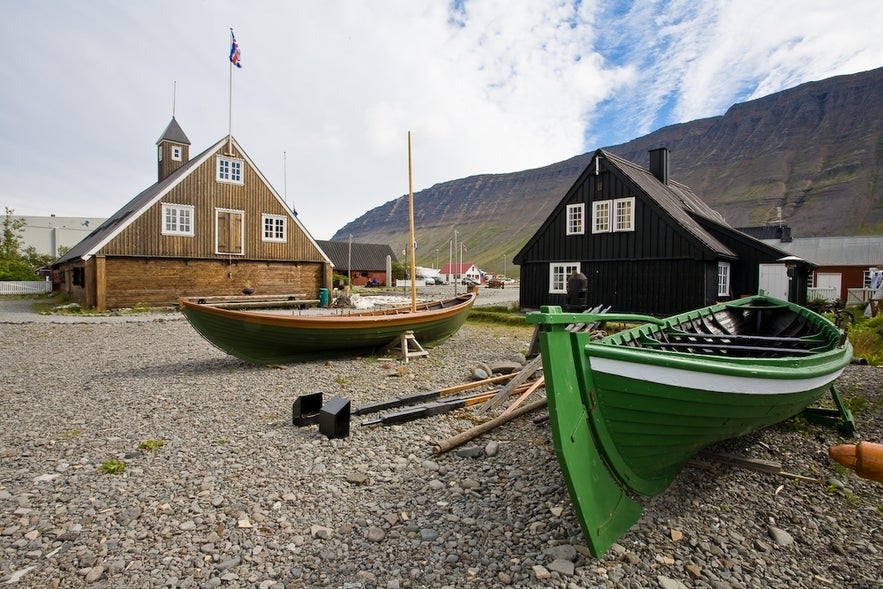
Photo from the Westfjords Heritage Museum website.
For those wanting to venture beyond the town, Isafjordur offers access to some of the Westfjords’ most spectacular landscapes. Popular activities include visiting the nearby Dynjandi waterfall, taking a boat trip to the remote Hornstrandir Nature Reserve, or enjoying a guided tour to experience the region’s unique beauty.
When you book Isafjordur shore excursions, you can expect pick up directly from the cruise ship harbor, making it simple and convenient to explore without needing to rent a car. Alternatively, there are many amazing Westfjord tours that depart from the town itself, a short distance from the harbor!
- Discover more with the Ultimate Guide to the Westfjords of Iceland
Things To Do From Isafjordur Harbor

Photo from Wikimedia, Creative Commons, by Laurent PETELET. Photo cropped.
Depending on how long your cruise ship is staying in Isafjordur, you’ll find plenty of incredible experiences to enjoy in the Westfjords. If you only have a few hours, spend some time exploring Isafjordur itself. This picturesque town is known for its cozy atmosphere, history, and surrounding steep mountain cliffs.
Wander the streets lined with old timber houses, stop by local shops, or enjoy a coffee and treat at one of the town’s cafés. This 2-hour Isafjordur walking tour is an excellent way to learn about the town's history while taking in its unique character during a shorter stop.
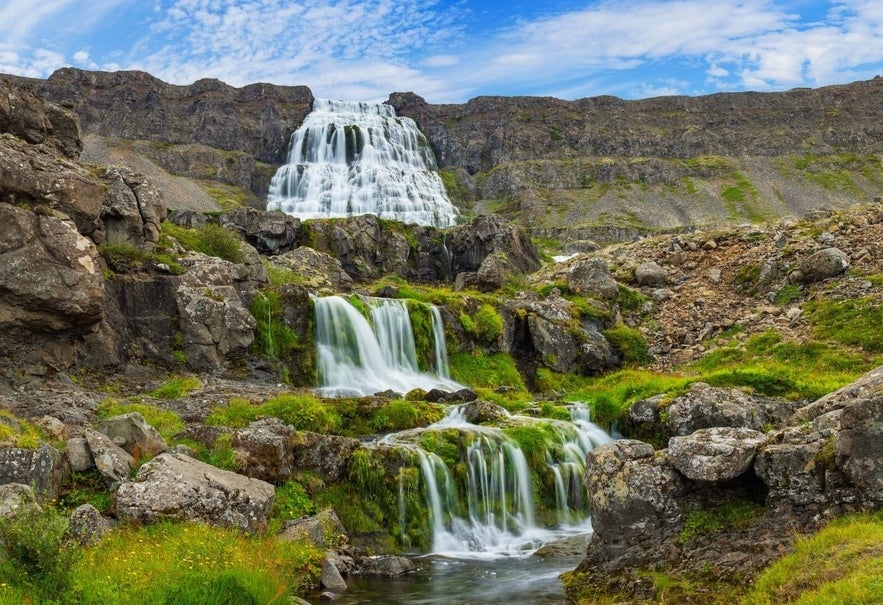 If you have a full day, head out to explore the natural beauty of the Westfjords. A visit to Dynjandi waterfall, often called the jewel of the Westfjords, is a must. This series of cascading falls is easy to reach from Isafjordur with this exciting 3.5-hour Dynjandi waterfall and farm tour.
If you have a full day, head out to explore the natural beauty of the Westfjords. A visit to Dynjandi waterfall, often called the jewel of the Westfjords, is a must. This series of cascading falls is easy to reach from Isafjordur with this exciting 3.5-hour Dynjandi waterfall and farm tour.
Along the way, you'll pass breathtaking fjord views and quiet villages, and after taking in the natural beauty, you'll get to visit a local farm, where you'll enjoy a hot drink and a traditional treat!
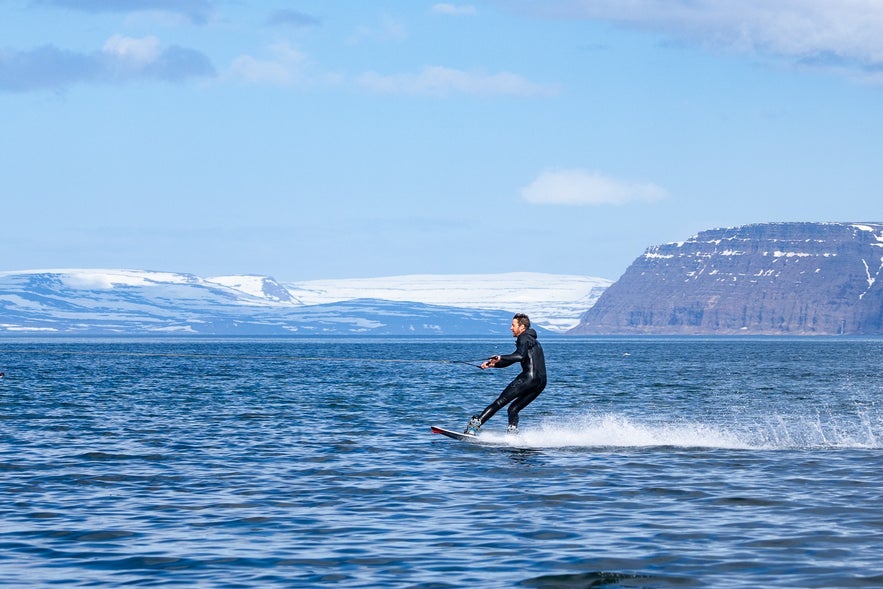
Photo from 7-Hour Westfjords Water-skiing & Sightseeing Adventure from Isafjordur
If you want to add some thrills to your Westfjord exploration, you can combine sightseeing with the excitement of water skiing among the beautiful fjords. This 7-hour Westfjords water-skiing and sightseeing adventure is sure to be an incredible experience!
Other Ports and Harbours Around Iceland
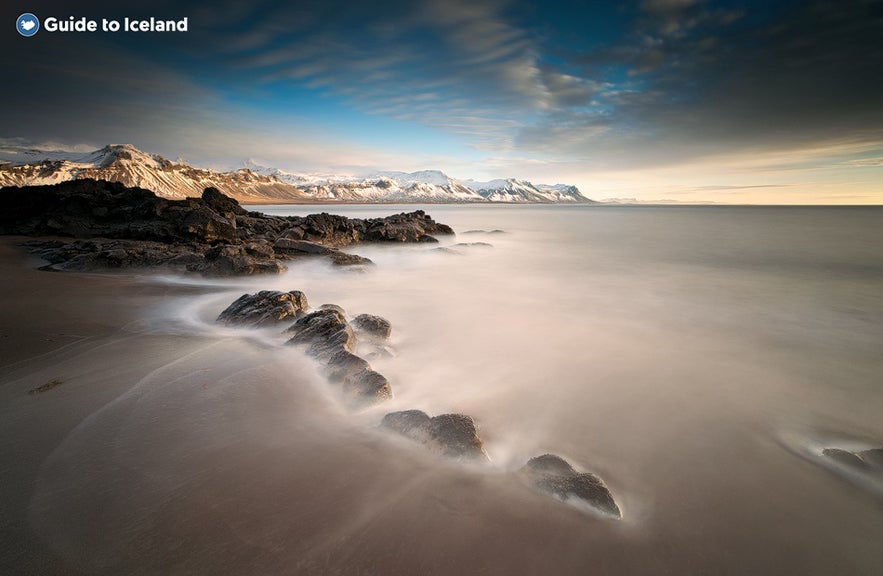 There are many cruise ship ports around Iceland that offer all kinds of experiences. Here are some other popular stops that may be included in your cruise ship travel itinerary!
There are many cruise ship ports around Iceland that offer all kinds of experiences. Here are some other popular stops that may be included in your cruise ship travel itinerary!
Seydisfjordur Harbor
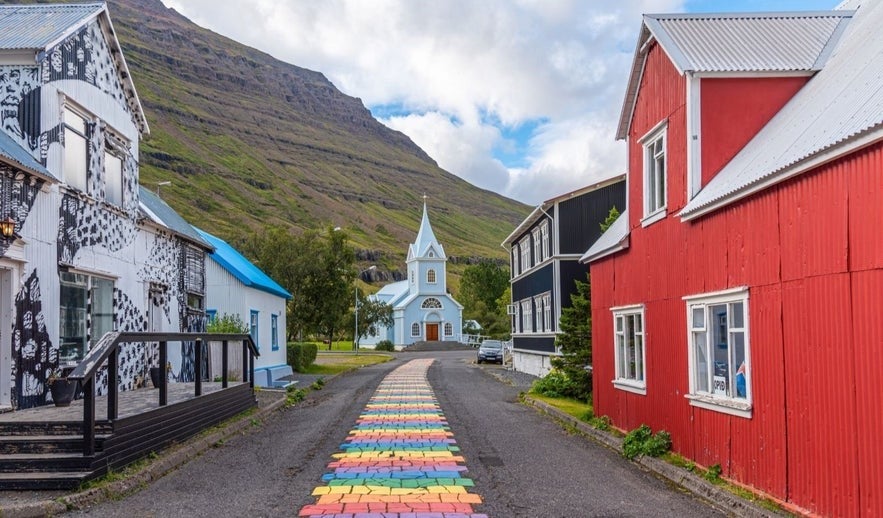 Seydisfjordur has been the primary connection between cruise ships and ferries to East Iceland for many years. It’s the arrival point for those traveling from mainland Europe via ferry and a popular Eastfjord stop. The town is known for its many beautiful wood houses, a very lively art scene, and the charming blue Seydisfjardarkirkja church.
Seydisfjordur has been the primary connection between cruise ships and ferries to East Iceland for many years. It’s the arrival point for those traveling from mainland Europe via ferry and a popular Eastfjord stop. The town is known for its many beautiful wood houses, a very lively art scene, and the charming blue Seydisfjardarkirkja church.
It’s well worth taking time to walk around the town, see the local art at the Skaftfell Art Center, take in the exhibits of the Technical Museum of East Iceland, and visit cozy cafés and stores selling local handcraft.
If you have the time, the town is surrounded by countless waterfalls and beautiful hiking opportunities, which you can check out with this exciting 2.5-hour hiking tour of 12 waterfalls!
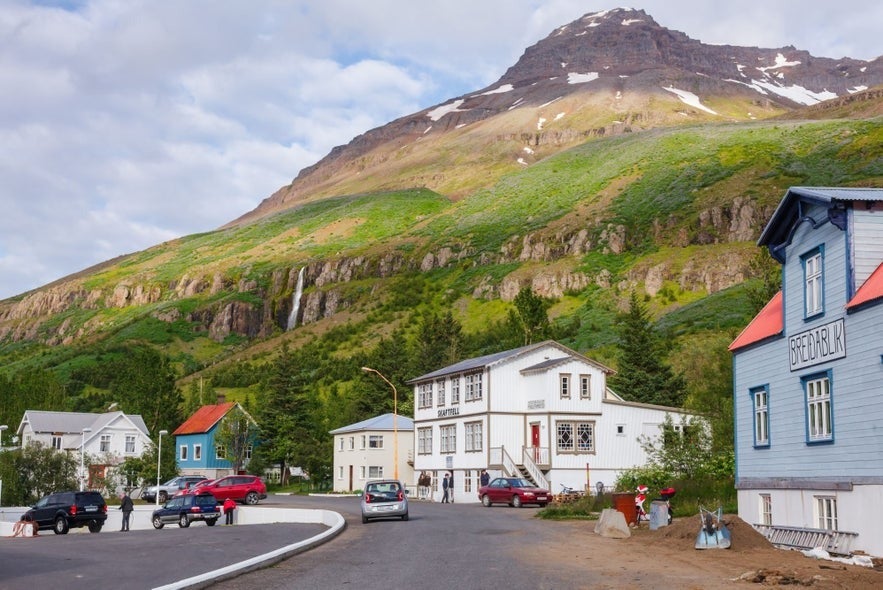 Some Eastfjord tours depart from Seydisfjordur, like this unique 7-hour nature and culture tour, which brings you to some incredible attractions in the region. This is a fantastic option if you have at least a full day in town.
Some Eastfjord tours depart from Seydisfjordur, like this unique 7-hour nature and culture tour, which brings you to some incredible attractions in the region. This is a fantastic option if you have at least a full day in town.
Afterward, don't miss out on the local food scene. Seydisfjordur is home to some of the best restaurants in East Iceland, so take the time to visit!
- Learn about the Best Places to Visit in East Iceland
- See also: The Ultimate Guide to Iceland's East Fjords
Djupavogur Harbor
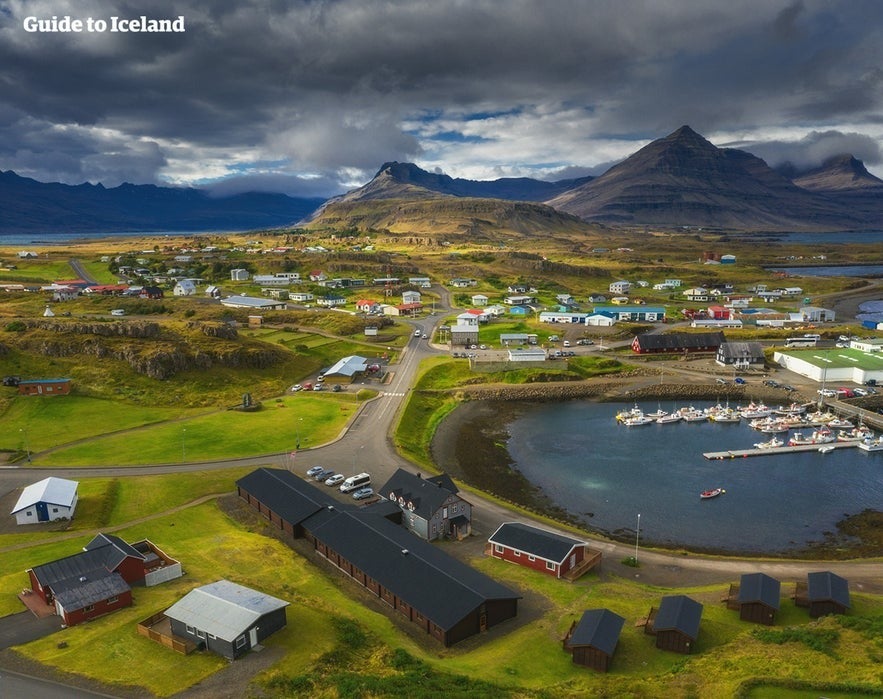 Djupivogur is a charming coastal village in East Iceland, known for its art scene and quiet way of life. The town is a part of the Cittaslow movement, which emphasizes a humane, safe, and wholesome society while taking time to enjoy life.
Djupivogur is a charming coastal village in East Iceland, known for its art scene and quiet way of life. The town is a part of the Cittaslow movement, which emphasizes a humane, safe, and wholesome society while taking time to enjoy life.
The cruise harbor by Djupavik makes it easy to see the local sights, including the Landabud Culture Center, the ARS LONGA art museum, Audunn's Mineral Collection, and the Eggs of Merry Bay art instillation in Gledivik.
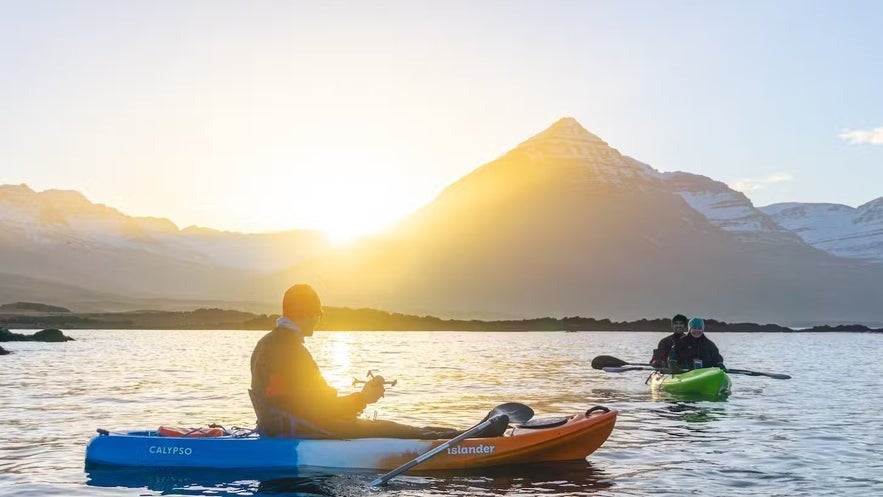
Photo from a Relaxing 2-Hour Kayaking Tour in Eastfjords from Djupivogur
Djupivogur also offers easy access to beautiful sceneries. It’s lovely to stroll along the coast to take in the incredible mountain views! There are also nice activities in the area, like kayaking under the stunning Bulandstindur mountain, and during the cruise ship season, there are fun Djupavogur shore excursions to choose from.
Husavik Harbor
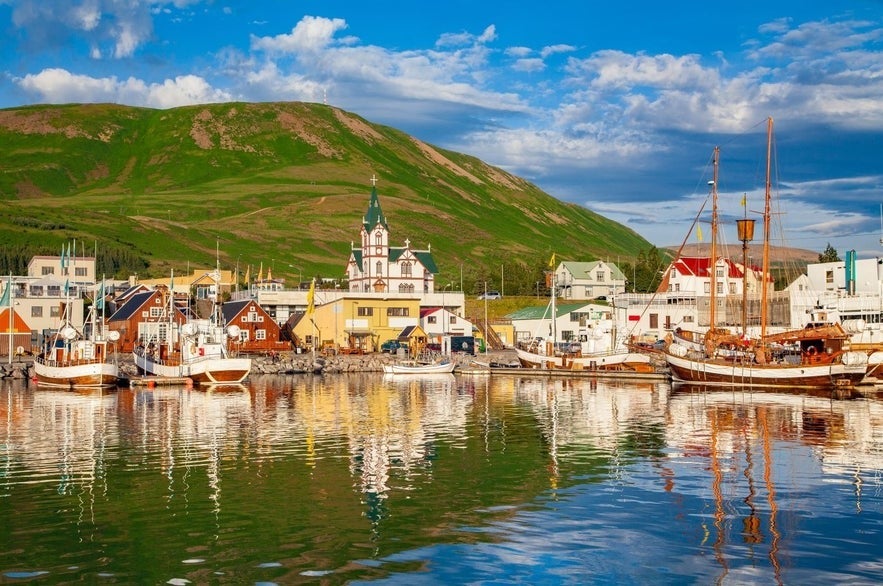 The town of Husavik in the North is known as the whale-watching capital of Iceland, so it won't come as a surprise that the highlight of any visit is a Husavik whale-watching tour! The harbor is the heart of the town and is always teeming with life, as it's a popular stop for travelers on self-drive tours and those exploring the Diamond Circle.
The town of Husavik in the North is known as the whale-watching capital of Iceland, so it won't come as a surprise that the highlight of any visit is a Husavik whale-watching tour! The harbor is the heart of the town and is always teeming with life, as it's a popular stop for travelers on self-drive tours and those exploring the Diamond Circle.
Husavik gained international fame in 2020 after being featured in the film Eurovision Song Contest: The Story of Fire Saga. You can visit a small Eurovision exhibition and themed bar in town, which are must-visits for any Eurovision fan. If you want more, you can even go on a one-hour walking tour of the Eurovision film sets in Husavik.
Other attractions include the Husavik Museum, which offers insights into the area’s history, and the GeoSea Geothermal Baths, where you can relax in warm waters while enjoying stunning views of the surrounding landscape. Husavik is a charming destination with plenty to explore, whether you're a nature lover, a history enthusiast, or a Eurovision fan!
Hofn Harbor
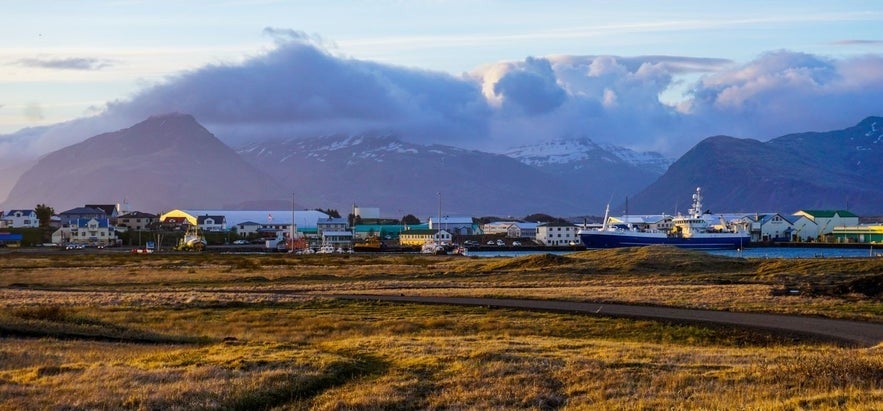 Hofn is a small town in southeast Iceland and a popular end stop on longer South Coast tours. It offers a gateway to Vatnajokull National Park and is an hour's drive from the famous Jokulsarlon glacier lagoon and 20 minutes from the incredible Vestrahorn mountain.
Hofn is a small town in southeast Iceland and a popular end stop on longer South Coast tours. It offers a gateway to Vatnajokull National Park and is an hour's drive from the famous Jokulsarlon glacier lagoon and 20 minutes from the incredible Vestrahorn mountain.
The cruise harbor in Hofn is conveniently located near the town center, so you can easily explore local attractions. Stroll through the town to visit the Hornafjordur Cultural Center, learn about glaciers at the Gamlabud Vatnajokull Visitor Center, or relax at one of the cozy cafés in town.
The town is famous for its fresh lobster and seafood, making it a great spot to enjoy local Icelandic cuisine. This is why this 2-hour walking tour of Hofn is a great activity for your visit, as you'll get to know the town's culture and enjoy a local food tasting!
For an extra adventure, you can join this 3-hour kayaking tour in the Hornafjordur fjord to enjoy the surrounding views.
- Discover the Best Restaurants on the South Coast of Iceland
- See also: Icelandic Food: The Ultimate Guide to Iceland Food Culture
Eskifjordur Harbor
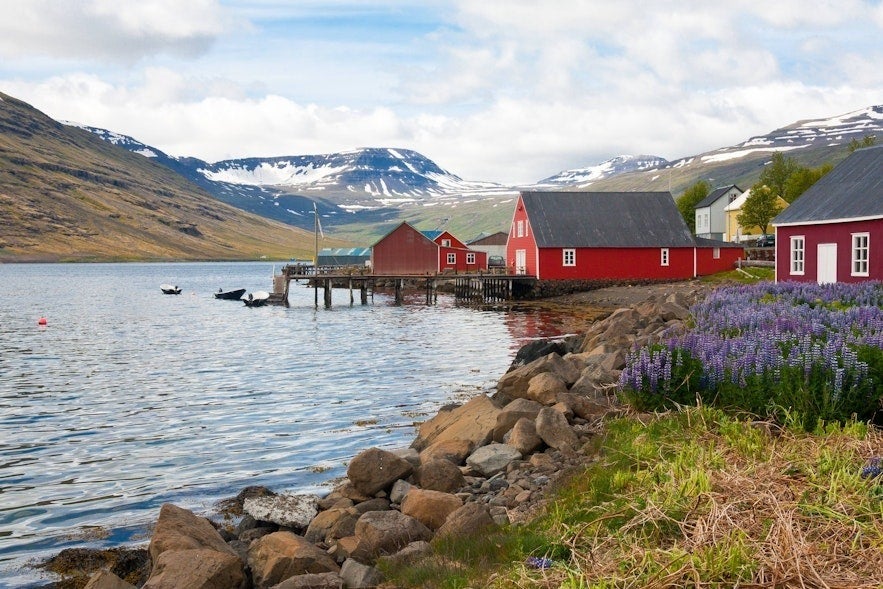
Photo from Flickr, Creative Commons, by Xavi. No edits made.
Eskifjordur is a small town in East Iceland, located just to the north of Djupivogur. This historic fishing village has beautiful surroundings, and its coastline features charming piers and boathouses. You can easily explore the town on foot from the cruise harbor.
During a stop in Eskifjordur, you can explore the Maritime Museum and visit Randulf's Sea House, a historic boat house built in 1890 that is now home to a popular restaurant. The dramatic mountains surrounding the town also offer opportunities for hiking!
Akranes Harbor
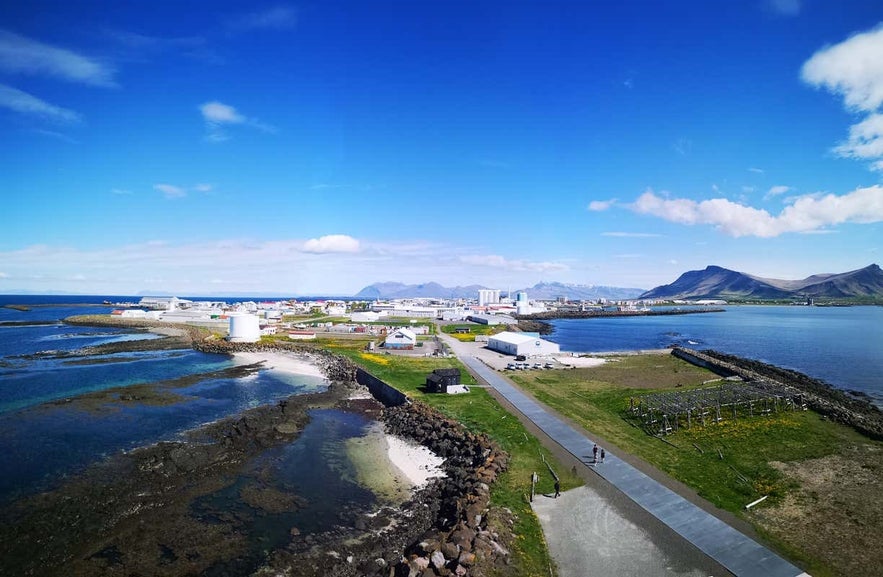
Photo from Private Off-The-Beaten-Path 6-Hour Akranes Town Tour in a Luxury Vehicle From Reykjavik
Akranes is a small town in West Iceland known for its scenic coastal views. It’s an accessible stop for cruise ship travelers looking to experience the quieter side of Iceland.
The cruise harbor in Akranes is close to the town center, making it easy to explore local attractions on foot. Key sights include the Akranes lighthouse, where you can enjoy panoramic views, and the Akranes Folk Museum, which offers insight into the region’s history and culture. For a relaxing experience, visit the Gudlaug Baths, a geothermal pool by the sea.
Akranes also serves as a gateway to nearby natural attractions, such as the Hvalfjordur fjord and Mount Akrafjall, which offer opportunities for hiking and sightseeing. With its convenient location and variety of activities, Akranes is a great spot to enjoy Icelandic culture and nature during your cruise.
Hafnarfjordur Harbor
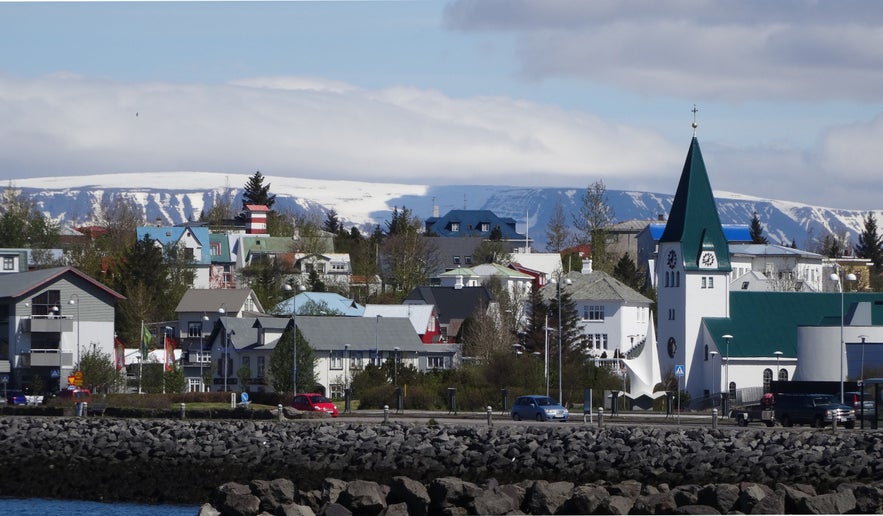
Photo from Wikimedia, Creative Commons, by Udm. No edits made.
Hafnarfjordur is a lively town within the capital region and just a 20-minute drive from downtown Reykjavik. It’s sometimes called the "town in the lava" because much of it is built on lava fields, giving it a unique charm!
Cruise ships docking in Hafnarfjordur harbor are just a short walk from the town center. Highlights include the Hafnarfjordur Heritage Museum, the Hafnarborg Art Center, the Viking Village, the Hellisgerdi park, and the Strandgata main street with shops and restaurants.
You won't find many shore excursions or tours departing from Hafnarfjordur, so it's best to spend your time exploring what the town has to offer. If you're stopping for more than a day, you can also take the straeto city bus to downtown Reykjavik and join guided tours from there.
- Learn about public transport with: Reykjavik City Buses: The Ultimate Guide
Grundarfjordur Harbor
 The town of Grundarfjordur is best known for its proximity to the Kirkjufell mountain, one of the most photographed mountains in Iceland. It also took a starring role in the HBO fantasy series Games of Thrones as the "arrowhead mountain."
The town of Grundarfjordur is best known for its proximity to the Kirkjufell mountain, one of the most photographed mountains in Iceland. It also took a starring role in the HBO fantasy series Games of Thrones as the "arrowhead mountain."
The harbor area of Grundafjordur offers a few shops and cafés where you can enjoy local treats while taking in views of the surrounding mountains and fjord. You can also go on this guided kayaking tour under Mt. Kirkjufell, which can be done in two hours.
If you have a day to spend, then we recommend heading out to explore the Snaefellsnes peninsula. This 8-hour private Snaefellsnes tour offers pickup from the harbor, and you'll be able to see the region's incredible nature!
Siglufjordur Harbor
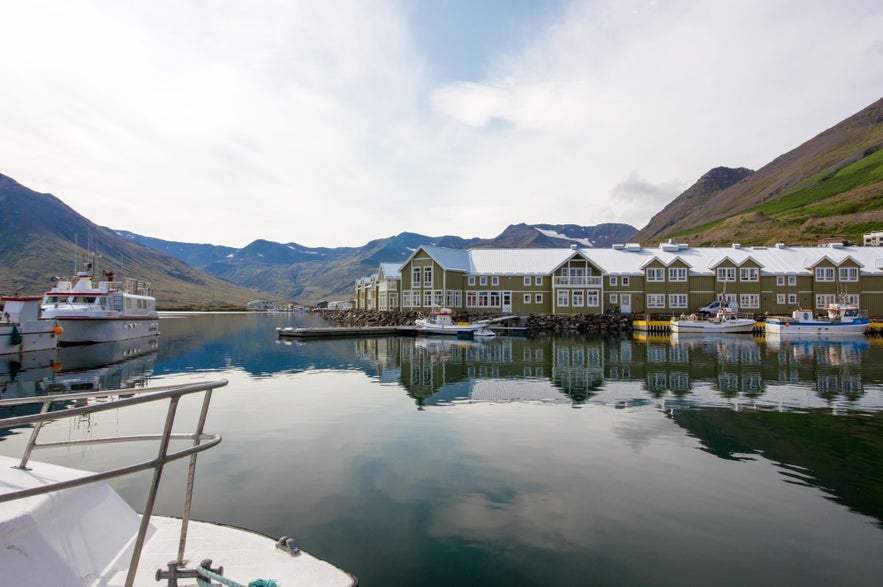 On the Trollaskagi peninsula, you'll find Siglufjordur, one of North Iceland's most charming towns. Siglufjordur has many hiking trails with beautiful views of the fjord and mountains, which you can also see on this 3-hour electronic bike ride tour. If you prefer to sight-see from the sea, this leisurely two-hour kayaking tour will also provide beautiful sights.
On the Trollaskagi peninsula, you'll find Siglufjordur, one of North Iceland's most charming towns. Siglufjordur has many hiking trails with beautiful views of the fjord and mountains, which you can also see on this 3-hour electronic bike ride tour. If you prefer to sight-see from the sea, this leisurely two-hour kayaking tour will also provide beautiful sights.
As you explore the town, you’ll find the Herring Era Museum, which is a must-visit. You can learn about the town’s role during the herring boom of the early 20th century through engaging exhibits and live demonstrations.
Whether you’re interested in history or nature, Siglufjordur provides a relaxed and fascinating experience for cruise passengers, so you'll easily be able to make the most of your visit.
- Discover the Best Museums in Iceland
Saudarkrokur Harbor
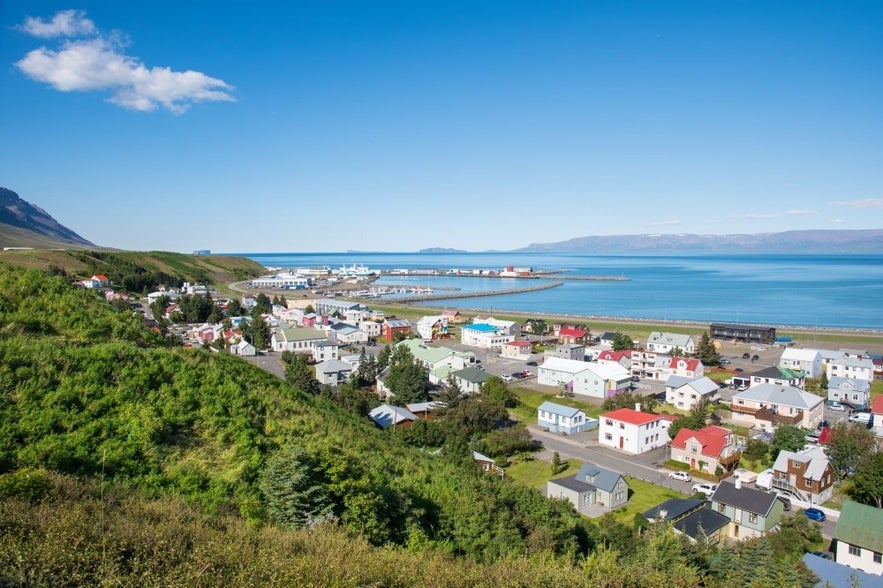 The town of Saudakrokur in the historic Skagafjordur fjord welcomes a small number of cruise ships each year. This area is steeped in history and was the setting for many iconic events in the medieval Icelandic sagas.
The town of Saudakrokur in the historic Skagafjordur fjord welcomes a small number of cruise ships each year. This area is steeped in history and was the setting for many iconic events in the medieval Icelandic sagas.
The harbor is small but inviting, with easy access to the town's main attractions. Strolling through Saudarkrokur, you'll find charming streets lined with colorful houses. Don't miss out on a visit to the Jarlstofa restaurant, which is housed in Iceland’s oldest hotel and offers a very cozy dining experience.
A visit to the Battle of Iceland exhibition is a must, where you can learn about the battle of Orlyggstadir in the year 1238, the largest in the country's history. The exhibition features engaging displays, including a virtual reality experience. As it’s a popular attraction in the region, we recommend booking your Battle of Iceland tickets ahead of time!
Stykkisholmur Harbor
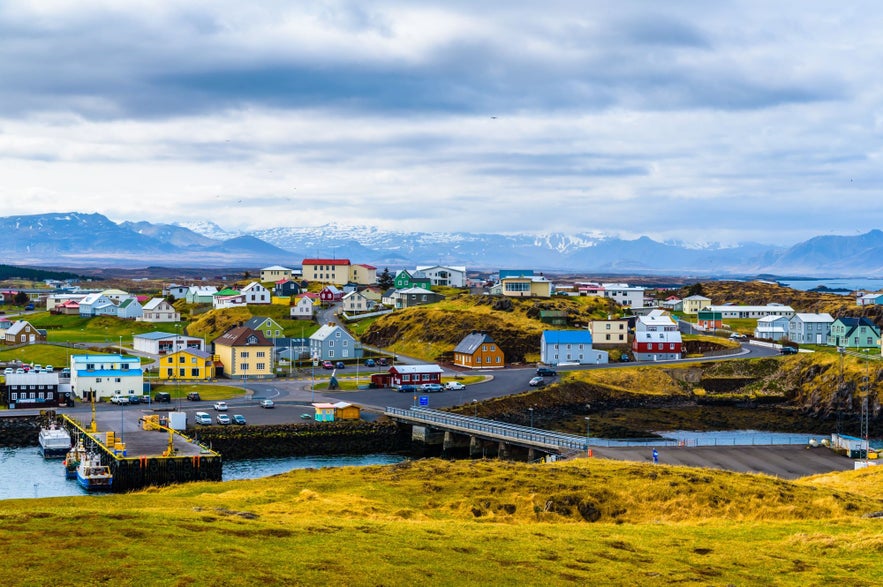 Stykkisholmur is the main town on the Snaefellsnes peninsula and has one of the most scenic harbors in Iceland. The town has many colorful houses framed by dramatic mountains and the vast Breidafjordur fjord.
Stykkisholmur is the main town on the Snaefellsnes peninsula and has one of the most scenic harbors in Iceland. The town has many colorful houses framed by dramatic mountains and the vast Breidafjordur fjord.
While in town, you can visit the Norwegian House, a historic museum showcasing local culture, and the Library of Water, an art installation featuring columns of melted glacier water. To take in the town's nature, visit the Sugandisey cliff, which offers great views of the harbor and surrounding area.
There are also some unique experiences available, such as this two-hour seafood boat tour, where you'll be able to try scallops directly from the ocean. If you have a full day, then you can go explore the isolated Flatey island by taking the ferry from Stykkisholmur. It’s a truly special place to visit!
Westman Islands Harbor
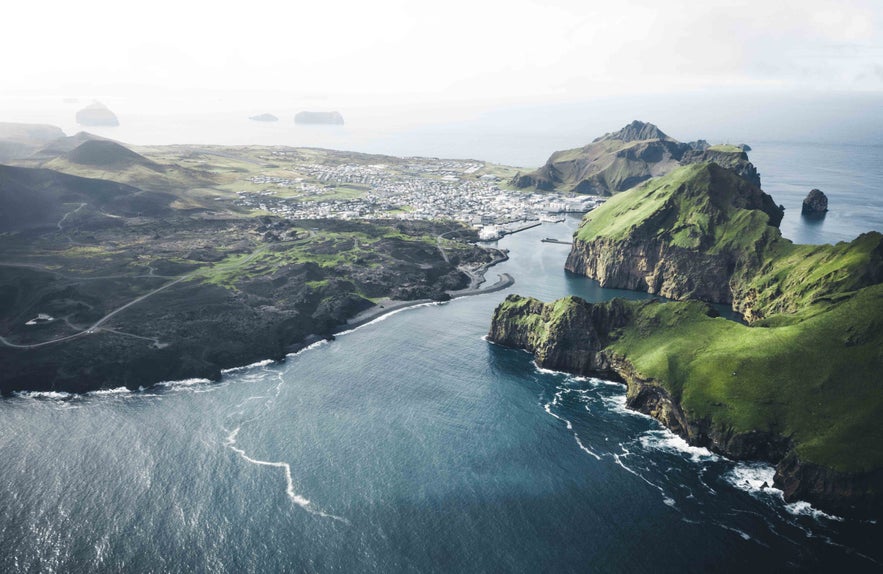 The Westman Islands are one of the most underrated areas in Iceland. They're just off the South Coast and feature incredible volcanic landscapes and the biggest puffin colony in the world!
The Westman Islands are one of the most underrated areas in Iceland. They're just off the South Coast and feature incredible volcanic landscapes and the biggest puffin colony in the world!
Your ship will dock in Heimaey, the largest and only inhabited island in the Vestmannaeyjar archipelago. The harbor is just a short walk from the town center, making it easy to explore the area on foot.
First off, make sure to visit the Eldheimar Museum, which tells the story of the 1973 eruption that reshaped the island and buried parts of the town. You can also book a visit to the Sealife Trust whale sanctuary, where you can meet two rescued beluga whales.
It's also worth taking time to hike around nature, see the puffins and the famous Elephant rock formation, and explore the islands. Great options for this are either an enchanting bike tour or this 2-hour boat tour from Heimaey Harbor.
- Discover the Top Things to Do in the Westman Islands (Vestmannaeyjar)
- See also: Volcanic Eruptions in Iceland: A Complete Timeline
Patreksfjordur Harbor
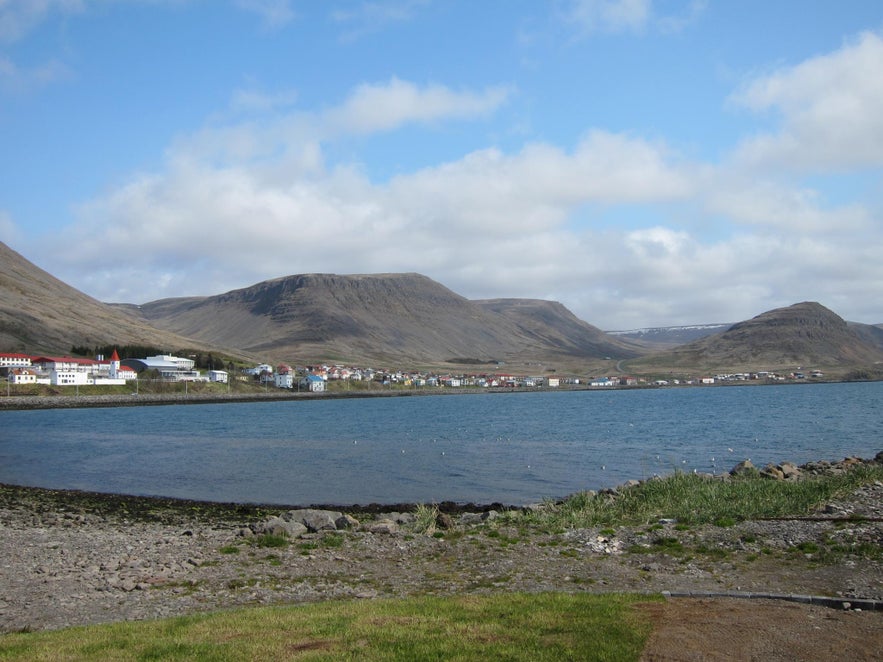
Photo from Flickr, by javasport.
The quiet town of Patreksfjordur in the Westfjords offers a gateway to some beautiful sights. The harbor's location makes it easy to stroll along the lovely coastline, taking in the mountains. We highly recommend a stop at the Patreksfjordur swimming pool, as it has incredible views over the fjord!
If you have an afternoon to spend in town, then take the chance to explore the surrounding sights, mainly the Latrabjarg cliffs and the Raudisadur red sand beach. The best way to do so is with this guided 6-hour Westfjords tour, which includes both locations.
For a shorter trip, you can explore Raudisandur beach with this scenic 4-hour cycling tour from Patreksfjordur. This unforgettable 5-hour hiking trip also brings you to the beautiful surrounding mountainsides closer to town.
If you're stopping for a full day and would like to experience a different side of the Westfjords, this 9-hour sightseeing and culture tour has many unique locations.
Thorlakshofn Harbor
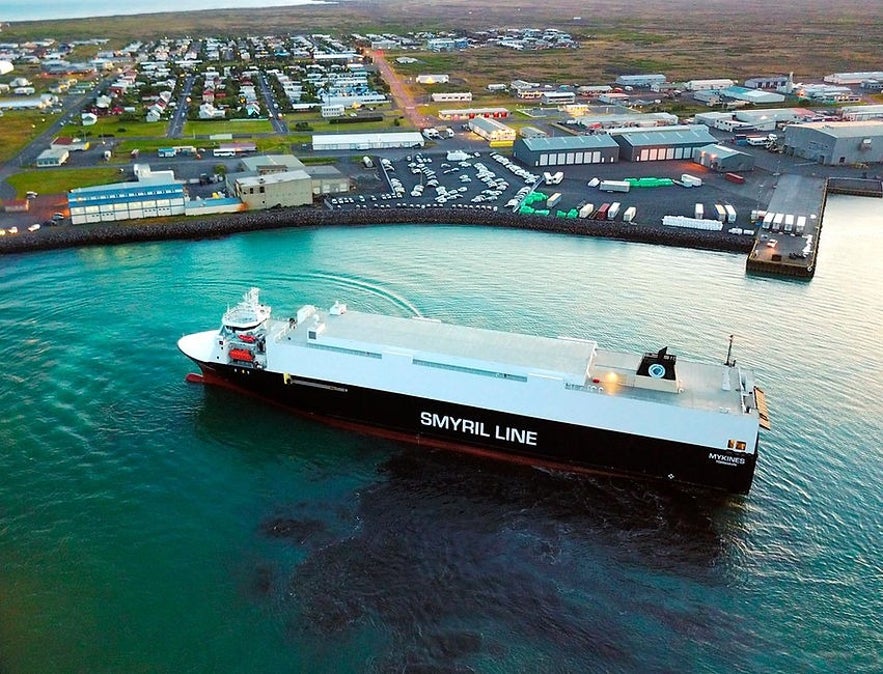
Photo taken from Thorlakshofn
The South Coast town of Thorlakshofn is seeing an increasing number of cruise ships every year and has some fun activities to offer.
One of the best things to do in the area is this family-friendly 1-hour horseback riding tour along the town's black sand beaches. You can also choose longer experiences, like this scenic 3-hour tour or this exciting 4-hour tour through lava fields.
Another fun activity is this 2-hour ATV tour along the expansive black sand beaches, a great way to experience this dramatic coastline!
For a more calm visit, Thorlakshofn also has interesting restaurants and shops. You can also visit the Thorlakshofn swimming pool to unwind or take a walk along the coastal trails near the harbor.
FAQs About Cruise Ship Travel in Iceland
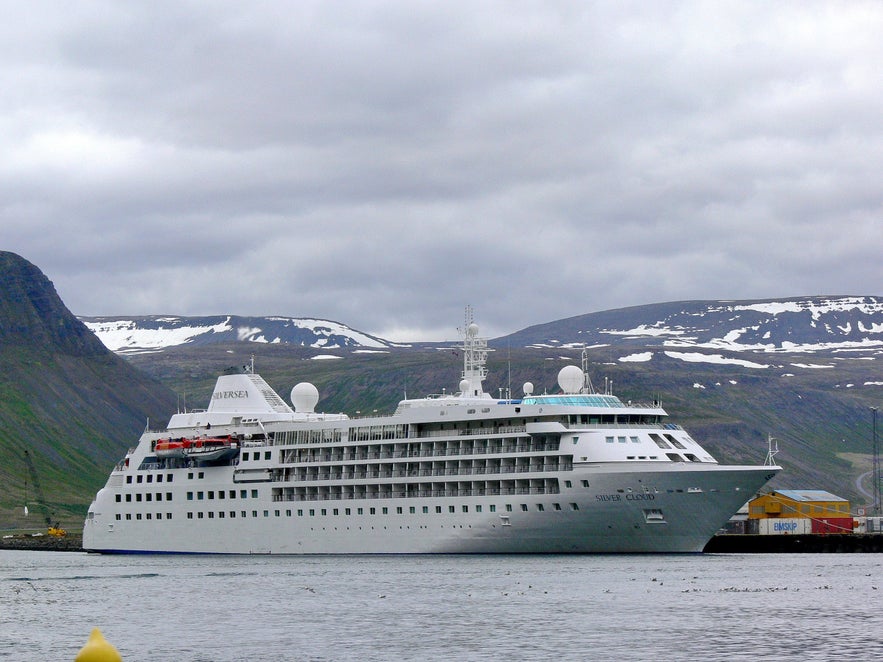
Photo from Wikimedia, Creative Commons, by Christian Bickel fingalo. No edits made.
Here are some of the most frequently asked questions about traveling to Iceland by cruise ship.
How long do cruise ships usually stay in Iceland’s ports?
Most cruise ships stay in port for 6–12 hours, depending on the itinerary. Some overnight stays are possible in larger ports, allowing more time to explore.
How much time should I budget for shore excursions in Iceland?
Excursions range from 2 hours to full-day trips. Factor in travel time to and from the port and the possibility of delays when planning activities. Always make sure to arrive back on your ship with time to spare, as it will not wait for you if you're late for departure.
Do I need to book shore excursions in advance?
While some excursions can be booked on the day, booking in advance is always recommended to ensure availability.
Are tours available directly from cruise ship ports in Iceland?
Yes, many tour operators offer shore excursions with pick-up and drop-off directly at the port. In many cases, the harbors are very close to the town center, so you can easily join tours departing from other locations.
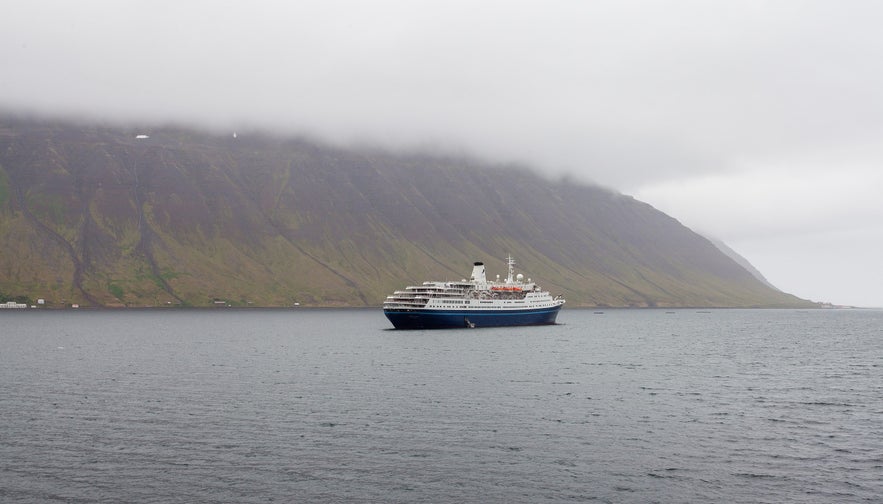
Photo from Wikimedia, Creative Commons, by Diego Delso. No edits made.
What happens if my cruise ship is delayed and I miss a booked tour?
Many tour operators are flexible and will refund or reschedule if delays occur. Check the cancellation policy when booking, and inform the operator of your cruise schedule.
Is Iceland suitable for families traveling on cruise ships?
Yes, Iceland offers family-friendly activities like whale watching, visiting wildlife centers, and exploring geothermal areas. There are plenty of family tours to choose from, but some tours may have age restrictions, so check in advance.
How do cruise ships affect Iceland's environment?
Cruise ships contribute to carbon emissions, waste generation, and potential disruption to marine ecosystems, though efforts are being made to lessen their impact.
Can cruise ships dock in Iceland without harming the local environment?
While cruise ships do have an environmental footprint, sustainable practices like using cleaner fuels, adhering to waste management protocols, and docking at ports with shore power can minimize their impact.
Have you ever been on a cruise or visited Iceland before? What did you like and dislike about the experience? Would you recommend traveling by cruise ship to Iceland? Share your thoughts and questions in the comment section below!
Andre spændende artikler
Kort over Island
Find det kort over Island, du har brug for, med disse 20 islandske seværdighedskort. Vi har lavet alle de væsentlige kort over Islands vigtigste attraktioner i Google Maps for nemt at hjælpe dig med...Læs mereHvor dyrt er der på Island? Hvornår du skal rejse og hvordan du sparer penge
Find ud af, hvor meget en rejse til Island koster, så du bedre kan lægge et budget for din rejse. Hvor dyrt er der på Island? Hvordan er tilstanden for den islandske valuta? Læs videre for at finde...Læs mereIsland med børn | En familieguide til Island
Hvordan er det at rejse til Island med børn? Hvilke ture, aktiviteter og spændende oplevelser har dine børn lov til at deltage i? Hvad er de mest spændende aktiviteter for din islandske familieferie...Læs mere

Download Islands største rejsemarkedsplads til din telefon for at administrere hele din rejse på ét sted
Scan denne QR-kode med dit telefonkamera, og tryk på det link, der vises, for at lægge Islands største rejsemarkedsplads i lommen. Indtast dit telefonnummer eller din e-mailadresse for at modtage en sms eller en e-mail med downloadlinket.

